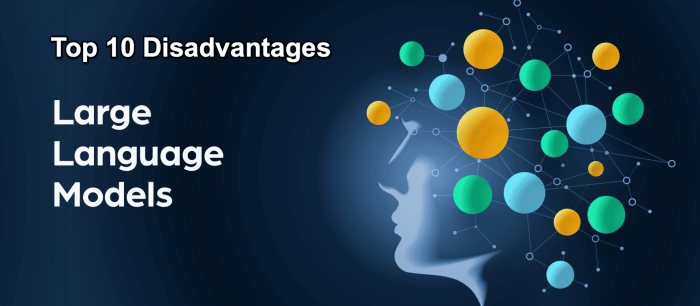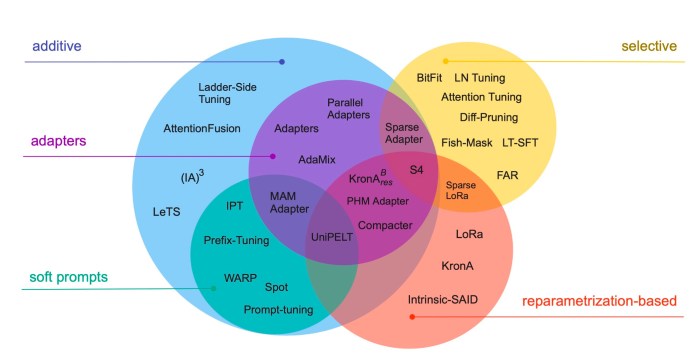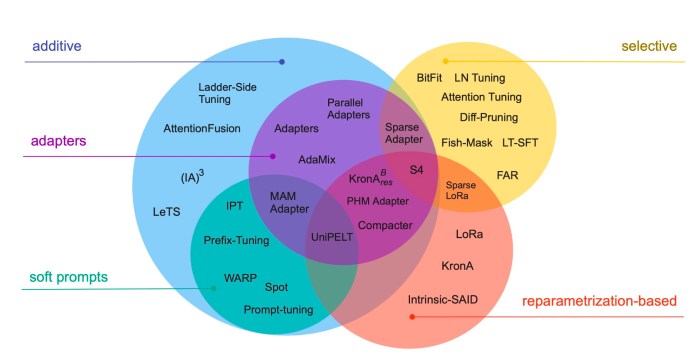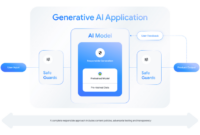Current Capabilities of Large Language Models
Large language models cant plan – Large language models (LLMs) have made remarkable progress in recent years, demonstrating impressive abilities in various tasks, including text generation, translation, and question answering. However, their capabilities in planning and decision-making remain limited.
Limitations in Planning and Decision-Making
LLMs are primarily trained on vast amounts of text data, enabling them to learn patterns and relationships within language. While this allows them to generate coherent and contextually relevant text, it does not equip them with the ability to plan or make decisions in the real world.
LLMs lack the following key elements for effective planning and decision-making:
- Understanding of the real world:LLMs operate within the confines of their training data and have limited understanding of real-world constraints, such as physical laws, social norms, and resource limitations.
- Goal-oriented reasoning:LLMs are trained to generate text that is relevant to the given prompt, but they lack the ability to set goals, identify relevant actions, and evaluate outcomes in a goal-oriented manner.
- Dynamic reasoning:Planning often involves adapting to changing circumstances and unforeseen events. LLMs struggle with dynamic reasoning, as their responses are based on static input and do not account for real-time changes.
Tasks Where LLMs Excel and Struggle
LLMs excel in tasks that involve processing and generating text, such as:
- Text summarization:Condensing large amounts of text into concise summaries.
- Machine translation:Translating text from one language to another.
- Question answering:Answering questions based on given text.
- Creative writing:Generating poems, stories, and other creative content.
However, LLMs struggle with tasks that require planning, decision-making, and understanding of the real world, such as:
- Strategic game playing:Developing and executing winning strategies in complex games like chess or Go.
- Robotics control:Controlling robots to perform tasks in dynamic environments.
- Financial forecasting:Predicting future market trends based on complex economic data.
Emergent Abilities
LLMs exhibit “emergent abilities,” meaning they can perform tasks beyond their explicit training, suggesting a level of generalization and adaptation. For example, some LLMs have shown surprising proficiency in tasks like code generation or even solving simple math problems. While planning and decision-making might seem like emergent abilities, current research suggests that these capabilities are not yet fully realized in LLMs.
These models are still primarily focused on language processing and lack the necessary grounding in real-world knowledge and reasoning to effectively plan and make decisions.
The Nature of Planning

Planning is a fundamental cognitive process that allows humans to anticipate future events and proactively shape their outcomes. It involves a complex interplay of mental faculties, enabling us to set goals, devise strategies, and execute actions to achieve desired results.
Cognitive Processes in Human Planning
Planning is not a single, isolated process but rather a complex interplay of various cognitive functions. These include:
- Goal Setting:This involves defining what we want to achieve, setting clear objectives, and establishing criteria for success. For example, a student might set a goal to achieve a high grade in a course, while a business might set a goal to increase sales by a certain percentage.
- Foresight:This involves considering potential future scenarios, anticipating challenges, and identifying opportunities. It requires us to think ahead and consider the potential consequences of our actions.
- Decision-Making:Planning often involves making choices between different options, weighing their potential benefits and risks. This process can be influenced by factors like our values, preferences, and available resources.
- Memory:Planning relies heavily on our ability to recall past experiences, knowledge, and learned skills. This allows us to draw upon past successes and failures to inform our current decisions.
- Working Memory:This enables us to hold information in mind while we process it, allowing us to manipulate and integrate different elements of our plan. For example, we might use working memory to keep track of multiple tasks or to evaluate different strategies.
- Problem-Solving:Planning often involves overcoming obstacles and finding solutions to unexpected challenges. This requires us to be flexible, adaptable, and able to think creatively.
Comparison of Human and Machine Planning
While large language models (LLMs) have made significant strides in various domains, including text generation and language translation, their ability to plan is still significantly limited compared to humans. Here’s a comparison:
- Goal Setting:LLMs can be programmed with specific objectives, but they lack the inherent ability to set goals autonomously based on internal desires or motivations. Humans, on the other hand, are driven by a wide range of goals, both intrinsic and extrinsic.
- Foresight:LLMs can analyze past data and predict future trends, but they struggle with truly understanding the nuances of complex situations and anticipating unforeseen events. Humans, with their ability to learn from experience and engage in abstract thinking, possess a greater capacity for foresight.
- Decision-Making:LLMs can make decisions based on predefined rules and algorithms, but they lack the capacity for subjective judgment, emotional intelligence, and ethical considerations that often guide human decision-making.
- Execution:While LLMs can execute instructions and perform tasks based on their programming, they are limited by their lack of physical embodiment and real-world interaction. Humans, with their physical bodies and sensory experiences, can more readily adapt to changing environments and execute plans in the real world.
Key Elements of Planning
Planning involves a series of interconnected steps, each contributing to the overall success of the process. These key elements include:
- Goal Setting:This involves defining clear, specific, measurable, achievable, relevant, and time-bound (SMART) goals. This provides a framework for directing actions and evaluating progress.
- Strategy Development:This involves identifying the steps necessary to achieve the goals, considering potential obstacles, and developing alternative plans in case of unexpected challenges. Strategies can range from simple checklists to complex roadmaps.
- Execution:This involves putting the plan into action, taking necessary steps, and monitoring progress. It requires discipline, commitment, and the ability to adjust to changing circumstances.
- Evaluation:This involves assessing the effectiveness of the plan, identifying areas for improvement, and making necessary adjustments. It helps ensure that the plan is aligned with the goals and that it is achieving the desired outcomes.
Technical Challenges in Enabling Planning

Planning for large language models (LLMs) presents significant technical challenges. These challenges arise from the complex nature of planning, which involves reasoning, memory, and understanding context, all of which are areas where LLMs are still under development.
Memory and Contextual Understanding
Planning often requires recalling past events, actions, and their consequences. LLMs need to have robust memory mechanisms to store and retrieve relevant information. Additionally, planning requires understanding the context of the current situation and how it relates to past events.
This involves being able to identify relevant information from a large amount of data and understanding its implications.
“LLMs need to be able to effectively store, retrieve, and reason about information over extended periods, while also maintaining a consistent understanding of the context in which they are operating.”
Reasoning and Logic
Planning involves logical reasoning, including deductive and inductive reasoning. LLMs need to be able to reason about the consequences of different actions and identify the most likely outcomes. This requires understanding the relationships between different concepts and events and being able to draw logical inferences.
The Role of Reinforcement Learning
Reinforcement learning (RL) has shown promise in improving planning capabilities in LLMs. RL algorithms can train LLMs to make decisions that maximize rewards over time. This involves learning from past experiences and adapting to new situations.
“By using RL, LLMs can learn to plan effectively by exploring different actions and receiving feedback on their outcomes.”
Challenges in Designing Algorithms
Designing algorithms for LLMs to perform planning is a complex task. The algorithms need to be able to handle the large amount of data that LLMs process, reason about the consequences of actions, and adapt to new situations.
“Designing algorithms for LLMs to perform planning requires a deep understanding of both the capabilities and limitations of LLMs, as well as the complexities of planning itself.”
Applications and Implications: Large Language Models Cant Plan
The ability of large language models (LLMs) to plan opens up a vast array of potential applications across various fields. These applications extend beyond traditional tasks and can revolutionize how we interact with technology and solve complex problems.
Potential Applications of Planning in LLMs, Large language models cant plan
This section explores potential applications of planning capabilities in LLMs. We will delve into various domains, examining the current state, potential impact, and challenges associated with each application.
| Application | Current State | Potential Impact | Challenges |
|---|---|---|---|
| Personalized Education | LLMs are used for generating personalized learning materials and adaptive assessments. | LLMs with planning capabilities could create personalized learning paths, predict student needs, and provide targeted interventions. | Ensuring ethical and unbiased planning, addressing potential biases in data, and safeguarding student privacy. |
| Healthcare | LLMs are used for analyzing medical data, generating reports, and assisting in diagnosis. | LLMs with planning capabilities could assist in treatment planning, predicting patient outcomes, and optimizing healthcare resource allocation. | Ensuring accuracy, reliability, and compliance with ethical guidelines, addressing concerns about patient privacy, and integrating with existing healthcare systems. |
| Robotics | LLMs are used for natural language control of robots, enabling them to understand and respond to commands. | LLMs with planning capabilities could enable robots to perform complex tasks, adapt to changing environments, and make decisions in real-time. | Ensuring safety and reliability, addressing ethical concerns about robot autonomy, and integrating with existing robotic systems. |
| Business and Finance | LLMs are used for analyzing financial data, generating reports, and providing insights. | LLMs with planning capabilities could assist in strategic decision-making, forecasting market trends, and optimizing business operations. | Ensuring accuracy and reliability, addressing concerns about data privacy and security, and integrating with existing business systems. |
Ethical Considerations
The development and deployment of planning-capable LLMs raise significant ethical considerations. It is crucial to address these concerns proactively to ensure responsible and beneficial use of this technology.
- Bias and Fairness: LLMs are trained on vast datasets, which may contain biases that could be amplified by planning capabilities. It is essential to develop methods for mitigating bias and ensuring fairness in planning outcomes.
- Transparency and Explainability: Planning processes in LLMs can be complex and opaque. Developing methods for explaining the rationale behind planning decisions is crucial for building trust and accountability.
- Privacy and Security: LLMs with planning capabilities could access and process sensitive information. Robust privacy and security measures are essential to protect user data and prevent misuse.
- Job Displacement: The automation of planning tasks through LLMs could potentially lead to job displacement. It is important to consider the social and economic implications of this technology and develop strategies for mitigating negative impacts.





